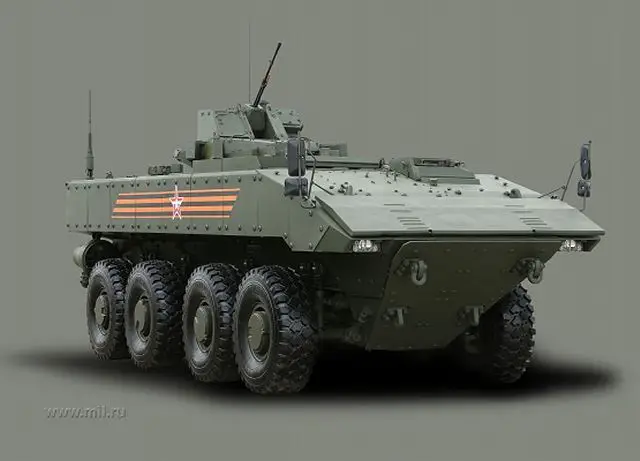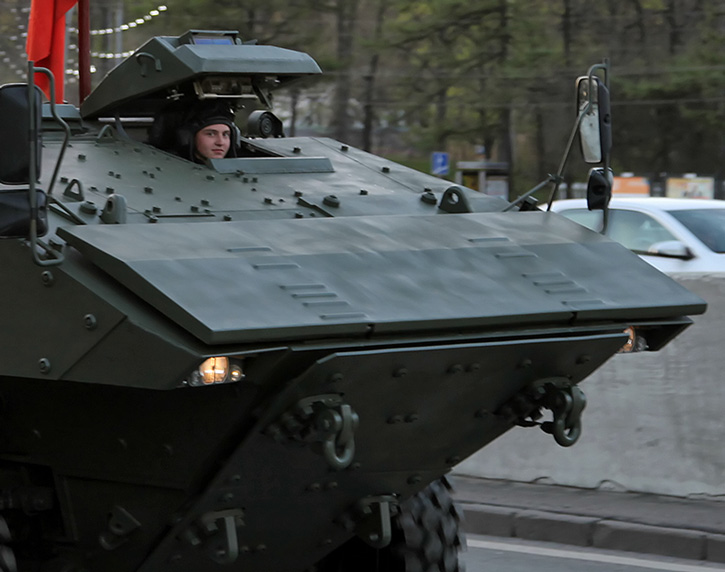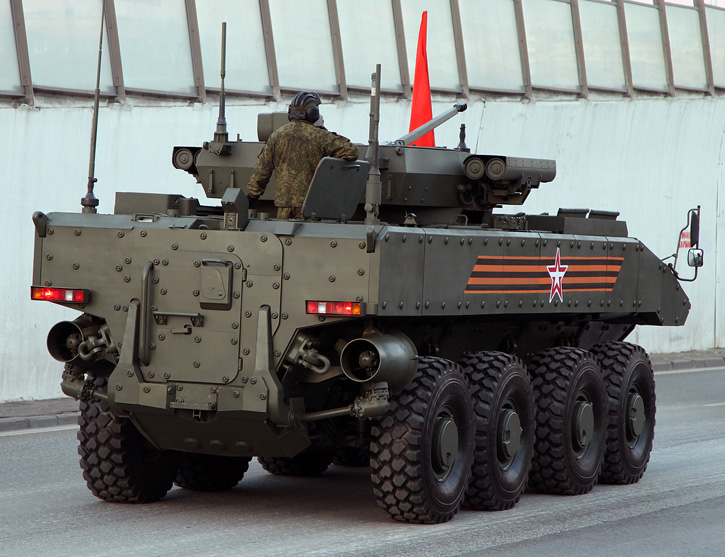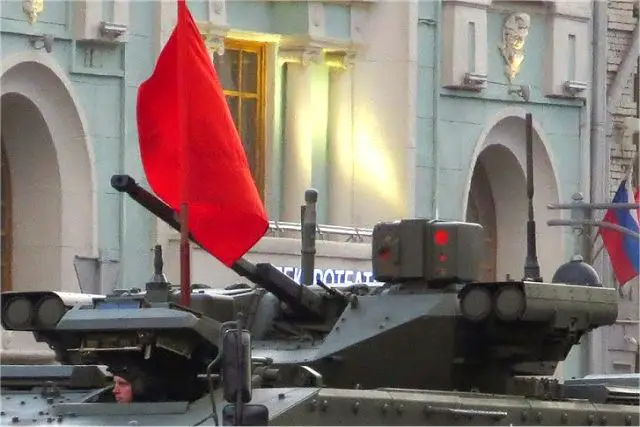The Boomerang or Bumerang is a new development of 8x8 armoured vehicle personnel carrier launched by the Russian defense industry to replace the old BTR family used by the Russian armed forces. Its design introduces significant changes from that of the BTR-60, 70 and 80, which have been in service since the early 1960s. VPK, the designer and manufacturer of the Russian wheeled combat vehicles, preferred to invest in the BTR-90, a more powerful, well-armed version of the successful BTR-60-70-80, of which +25,000 were produced over the past 50 years.
But the Russian military wanted something else. VPK shelved the BTR-90, modified the BTR-80 into the BTR-82 as a temporary solution, and began to design a new 8×8 platform to address the Russian military needs reflected by the official requirement issued in 2011.
In 2011 Russian MoD issued a requirement for a modular family of armored vehicles instead of the BTR-90. The project is known as the Bumerang (boomerang). A baseline vehicle is an armored personnel carrier. It was developed alongside a new-generation Kurganets tracked armored vehicle family. The whole project was kept in high secrecy. The new APC was revealed to Russian military officials in 2013. During the same year first Bumerang APCs were delivered to the Russian Army for trials and evaluation. It was first publicly revealed in 2015. In 2015 a handful of pre-production vehicles were delivered to the Russian armed forces. Once approved, full-scale production could begin in 2016.
The Bumerang is a clean sheet design. It is not based on any previous Russian armored vehicle. Actually it resembles Western designs. A number of components and subsystems of the Bumerang are interchangeable with the Kurganets family of tracked armored vehicles.
The Boomerang is operated by a crew of three, and has a carrying capacity of 9 troops. In line with other modern 8×8 APCs, its fighting compartment is more spacious than previous BTRs. Its engine, which is located on the right side and its turret, mounted on the deck, not penetrating the armor, do not obstruct its internal space. This layout enables the troops to exit from the rear ramp, similar to the tracked BMPs. Although common with western 8×8 APCs, it did not exist in earlier Russian 8×8 vehicles.
Once operational the new-generation Bumerang APC should replace a whole host of ageing Russian armored vehicles. The estimated requirement is for at least 2 000 wheeled armored vehicles.
Design and protection
The Bumerang layout is very similar to modern wheeled combat vehicle with the power pack at the front, driver front left, the turret in the middle, and the troop’s compartment at the rear. The troops enter and leave via a single hydraulic doors in the hull rear. The vehicle uses V-shaped technology for the hull, that protects occupants by deflecting mine blasts anywhere under the vehicle. The Bumerang can carry a total of 10 soldiers, including driver, commander, gunner and 7 infantrymen. Over the top of the hull at the rear of the turret are two roof hatches, one each side, which are manually hinged and can be locked vertically to protect the troops when they are outside. The Bumerang hull provides protection against firing of small arms and shell splinters. In addition to this, Bumerang is also equipped with bolt-on ceramic armor which offers all-around protection against 14.5 mm, armor-piercing ammunition, and artillery fragments from 152 mm rounds.
Propulsion
The Bumerang uses a 8x8 all-terrain chassis. The Bumerang will feature full 8 × 8 drive with power steering on the front four wheels. The Boomerang is powered by a single turbo-charged diesel engine, a four-stroke turbocharged Diesel engine UTD-32TR developing 510 hp. The same type that powers the Kurganets-25 platform. All wheels use MacPherson-type suspension , with both front and rear wheels fitted with double shock absorbers. The drive train also has two extensions powering the water jets for amphibious operation. A folding wave breaker mounted above the front hull, extracted to is released to clear the deck while operating in water.
Armament
The Bumerang is equipped with an electrically powered unmanned turret mounted in the centre of the hull. The turret is armed with the 2A42 30mm automatic cannon. A 7.62mm coaxial PKT machine gun is mounted to the left side of the main armament. Two launchers of anti-tank guided missile Kornet-EM are mounted on each side of the turret. The Bumerang can engage all mobile or static targets by day and night at a maximum range of 5,500m. The Kornet is an advanced ATGM (Anti-Tank Guided Missile) with spiral trajectory. The Kornet-EM variant uses technical vision with an automatic target tracker to make it a "fire and forget" missile, giving it a 5-times increase in accuracy of target tracking at any range. The fire and forget capability gives a vehicle the ability to salvo launch against two different targets at once, increasing its rate of fire and decreasing the number of vehicles needed for a mission. It can also salvo fire two missiles against one target to defeat vehicles equipped with an active protection system. The main armament can be controlled by commander and gunner for firing operations.
Accessories
The Bumerang is fully amphibious, being propelled in the water by two propellers which were situated one either side of the hull at the rear. As all the modern combat vehicles, the standard equipment of the Boomerang could include air-conditioning, NBC protection system, night vision equipment, computerized fire control, and central tyre pressure regulation system. The Bumerang is fitted with video cameras to provide the troops a full 360° view all-around from inside the vehicle.
Other variants expected to follow include a self-propelled gun, a mortar carrier, a command vehicle and other combat support variants. An 8×8 vehicle called ‘ATOM’ was displayed at the ARMS 2013 expo in Nizhny Tagil, fitted with a 57mm cannon. At the time ATOM was presented as a collaborative effort between UralVagonZavod (UVZ) and Renault Defense Trucks of France, though to be a competing track to the Boomerang.



